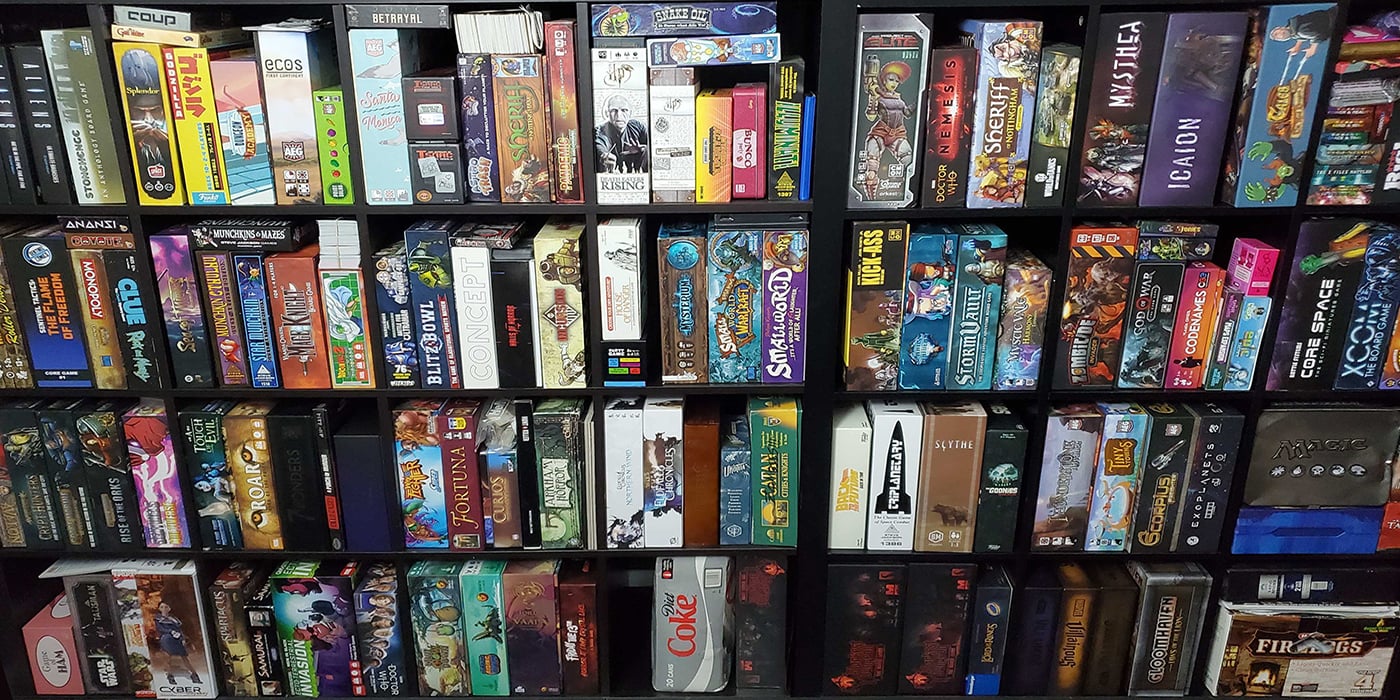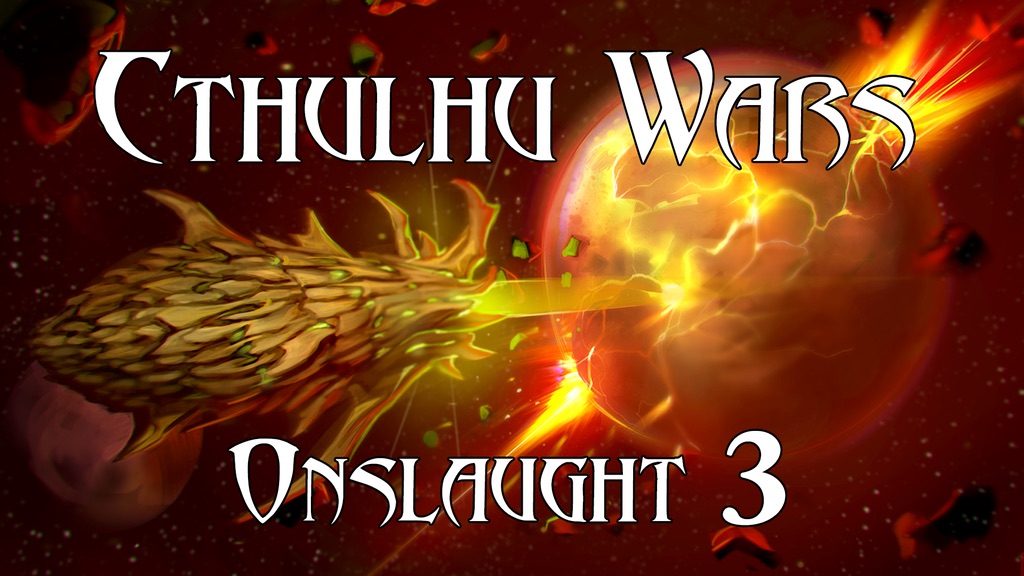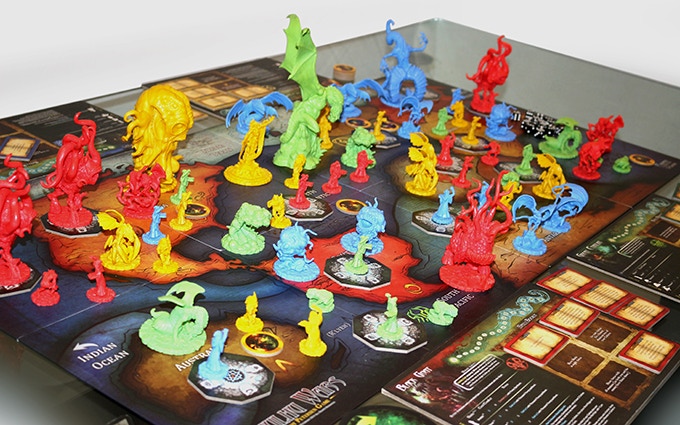Board Game Spotlight: Cthulhu Wars

There’s still around a week left to pledge to the latest Cthulhu Wars Kickstarter, and here’s why you should consider doing so!
Cthulhu Wars Onslaught 3 Kickstarter
There’s no shortage of Cthulhu-related products in the tabletop industry. Be it miniatures, board games, card games, or RPGs, the works of H. P. Lovecraft have directly spawned or inspired numerous games. Sandy Petersen’s Cthulhu Wars is easily one of the more impressive games to bear the name of everyone’s favorite tentacle-faced cosmic horror. The massive box that makes up the core set comes packed with impressive, preassembled, vaguely 28mm miniatures divided between four factions. Board game miniatures can be pretty hit or miss at times, but Cthulhu Wars delivers a ton of highly detailed and sturdy miniatures that would look just as impressive painted and on a shelf as they do on the game board itself. Their scale even makes them useful as enemies in your favorite RPG. Luckily, this is one example of a game that isn’t just about pretty miniatures; the actual gameplay is equally worth owning a copy of Cthulhu Wars for.
In Cthulhu Wars, four players (Up to eight with the various expansions) control the worshipers and armies of one of the various Great Old Ones. The factions in the core box are The Great Cthulhu, Crawling Chaos, Yellow Sign, and The Black Goat. Each faction wants to bring about the end of the world in their own unique way, but it generally involves recruiting cultists, constructing gates, summoning monsters, fighting enemies, and performing rituals. There’s about half a dozen generic actions you can take, each of which require power that you gain for each controlled gate and cultist you have. The overall goal is to be the first player to gain all six of your spell books and acquire 30 or more doom points, but I’m getting ahead of myself. Let’s go over the basics that make up a turn.
At the start of each turn, players gain power based on the number of cultists (one power) and gates (two power) they control, as well as an additional power for each uncontrolled gate on the board. The player with the most power goes first, though in the event of a tie Cthulhu gets to go first.
After gathering power, players gain doom points equal to the number of gates they control. Then, players can choose to perform a Ritual of Annihilation to gain extra doom points. This simply involves spending power, though the Rituals get progressively more expensive as the game drags on, and performing too many of them immediately ends the game. Performing a Ritual of Annihilation also nets you an Elder Sign, which is basically just a token that you draw from a bag that gives you extra doom points. These can be kept secret or revealed at any time to gain that many points.
Then, the actual turn begins. Players alternate taking a single action until everyone has exhausted all of their power. The generic actions include the following, though depending on your faction you may have more options:
• Recruit a cultist for one power.
• Construct a gate for three power.
• Summon a monster by spending its power cost.
• Spending one power to capture an unguarded enemy cultist.
• Move units by spending one power for each unit you wish to move.
• Initiate a battle for one power.
• Awaken your Great Old One by spending their power cost.
Combat is incredibly simple and involves rolling pools of D6s. Each of your monsters have a power rating that indicates how many dice they contribute to a fight. Before the battle begins, players will have a chance to activate any pre-combat abilities they may have. After that, each player gathers up their dice pool and rolls off. The only relevant rolls are fours and up. Fours and fives are Pain. This forces your opponent to pull models back to an adjacent location not occupied by your opponent’s troops. Sixes are Kills, which is pretty self-explanatory. Normally you get to choose which of your models die or retreat, though there are some exceptions.
Basic monsters usually only get one or two dice, but the Great Old Ones bring massive pools that can easily reach eight or more. This means that combat usually doesn’t get particularly deadly until later stages of the game, once the Great Old Ones start to awaken. The nature of combat also means that everything is vulnerable, since all it takes is a single roll of six to kill something. Your Great Old One, while powerful, isn’t an unstoppable god of destruction. You’ll need to protect it with fodder like cultists and lesser monsters to keep it alive.
That’s pretty much the basics of the game. The core rules are extremely easy to pick up. Even novices will have a decent grasp of how to play after just a few turns. The game is also deceptively fast, more so than you would expect from the number of miniatures and components. You can easily play out a full game in under two hours, especially if everyone knows what they are doing. There isn’t much downtime between turns either, since everyone only takes a single action at a time. That isn’t to say that the game is simplistic or lacking in depth, however. While the core mechanics are easy to learn, all the complexity and strategic depth comes from the factions themselves.
Each faction will have a few passive abilities, their own unique set of monsters, six spell books, and their Great Old One. You need to gather all six of your spell books before you can consider cashing in your doom points to win. Each spell book slot has different requirements you must meet to fill it with a spell book, though when you meet a requirement you can choose whichever book you want. These requirements are completely different for each faction, and help to emphasis the way you are meant to play that faction.
The spell books themselves give you either a new passive ability or a special action. Some spell books are clearly better than others, but each one still gives you a fairly significant option. To give you a few ideas, Cthulhu’s Submerge spell book allows you to remove him and friendly units in the same space from the board while in an ocean. You can then place them anywhere on the board in a later turn. Crawling Chaos can sacrifice Nightgaunts before battle to remove enemy models via the Abduct spell.
I can’t stress enough how radically different each faction plays. You have aggressive, combat-focused factions like The Black Goat, while Yellow Sign is more concerned with traveling across the board desecrating specific locations to gather power. Some of the expansion factions are especially unique. Our group played with Opener of the Way once during our last session, which is a bizarre faction based around gate manipulation. They can teleport gates around the map, including enemy gates, and can summon monsters at gates they don’t control. Other expansions include things like unaligned monsters and Great Old Ones, and a variety of alternate maps to give players more exotic locations to fight over.
The biggest downside to Cthulhu Wars is the sheer price of the package. As you can imagine, the number of large models included in the box really drives up the cost. You can expect to pay somewhere between $150 to $200 for the core game alone. Faction expansions cost around $50. Alternate maps are usually $40 each. To round out the expansion madness, there are a variety of sets with neutral and unaligned units that can cost upwards of $60 each. As part of the current Kickstarter, getting the core game and most of the major expansions will set you back $750, before shipping costs. It’s certainly not an impulse buy, and I’ve had some friends lament over the fact that there isn’t a cheaper version available that excludes the miniatures in favor of cardstock tokens.
If you can afford taking the plunge, you’ll find a great asymmetrical strategy board game that comes loaded with an army of gorgeous miniatures well worth adding to your collection. The base game has been out for some time now, and can be found at your local tabletop gaming store or directly from Petersen’s website. You still have a chance to jump on the latest Kickstarter as well, which promises to add even more factions, unaligned units, and map packs with unique mechanics.
~Anyone here play Cthulhu Wars?










